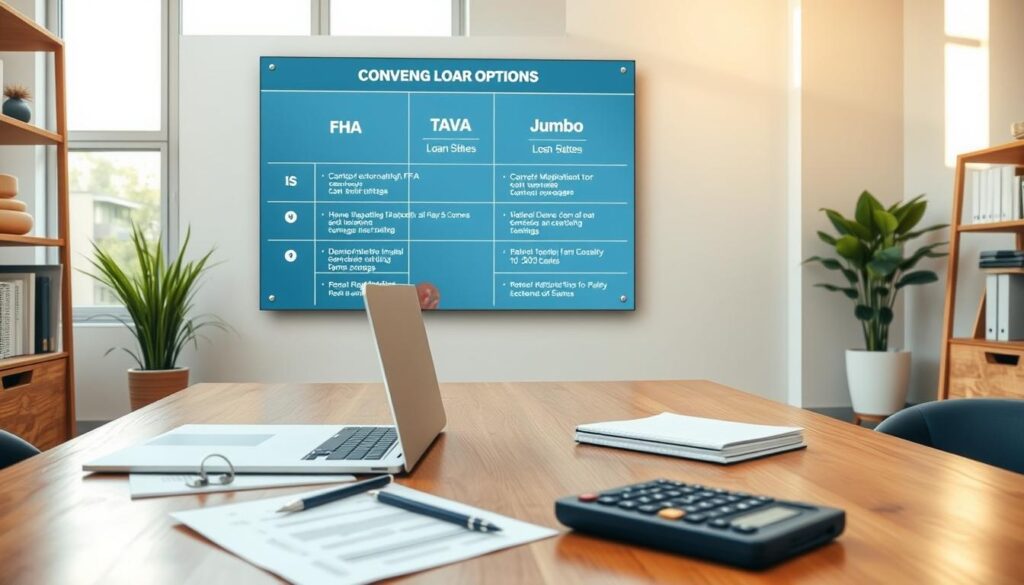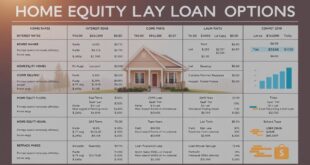Navigating the world of mortgage options can feel overwhelming, but understanding your choices is the first step toward securing the right financing. Whether you’re a first-time buyer or looking to refinance, lenders like Bank of America and Wells Fargo offer tailored solutions to meet diverse needs.
Bank of America provides popular fixed-rate mortgages, including 30-year and 15-year terms, along with adjustable-rate products like their 5y/6m ARM. Meanwhile, Wells Fargo stands out with programs like the Homebuyer Access grant, offering up to $10,000 for qualifying down payments. Their Dream. Plan. Home. initiative also assists eligible buyers with closing costs.
From conventional loans to government-backed FHA or VA options, each product serves different financial situations. Specialized programs cater to educators, healthcare workers, and buyers in specific income brackets, making ownership more achievable.
Understanding lender requirements and assistance programs could save thousands upfront. We’ll help you compare rates, terms, and eligibility criteria to find your ideal match.
Key Takeaways
- Major lenders offer fixed-rate, adjustable-rate, and specialty mortgage products
- Down payment grants can provide up to $10,000 in assistance
- Income-based programs reduce closing costs for eligible buyers
- Government-backed loans expand accessibility for various credit profiles
- Comparing multiple lenders ensures better rates and terms
Home Loan Overview and Competitive Rates
Securing the best mortgage terms starts with understanding today’s rate environment. The average 30-year fixed-rate mortgage sits at 6.96% for purchases, offering predictable payments over decades. Refinancing options currently average 7.21%, though these figures shift based on market conditions and your financial profile.
Understanding the Home Loan Landscape
Your location plays a surprising role in rate offers. Lenders like Bank of America calculate quotes using local data – a $200,000 mortgage in ZIP code 95464 might have different terms than the same loan elsewhere. Adjustable-rate mortgages (ARMs) often start 1-2% lower than fixed options, appealing to those planning shorter stays.
While today’s rates remain higher than pre-pandemic levels, strategic comparisons help. Interest rates and APR differ – the latter includes fees, giving a truer cost picture. A 5/6 ARM might show 5.75% initially versus 6.96% fixed, but prepare for potential adjustments after five years.
Loan amounts and credit scores also shape your options. Stronger financial profiles often unlock better terms, while specialized programs assist educators or healthcare workers. Always request personalized quotes from multiple lenders to spot hidden savings.
Understanding Fixed-Rate and Adjustable-Rate Mortgages
Choosing between mortgage types shapes your financial future. Fixed-rate options lock your interest rate for the entire term, keeping principal and interest payments unchanged. Adjustable-rate mortgages (ARMs) start with lower rates but fluctuate based on market indexes.
Fixed-Rate vs. Adjustable-Rate Comparison
Fixed-rate mortgages offer complete payment predictability. Your monthly payment stays identical whether rates rise or fall. This stability helps long-term planners budget confidently over decades.
ARMs like Bank of America’s 5y/6m product begin with lower initial rates. These could save $300+ monthly during the first 5-10 years. However, after the fixed period ends, rates adjust every six months using the SOFR index.
Benefits and Considerations
Fixed rates protect against rising interest rates – ideal if you’ll stay put 10+ years. ARMs suit those planning shorter stays or expecting higher future income. Built-in rate caps limit how much your payment can increase annually.
Consider how often ARM adjustments occur. A 5/6 ARM changes every six months after five fixed years. While caps provide safety nets, potential payment jumps require financial flexibility.
Navigating the Home Loan Application Process
Streamlining your mortgage journey starts with smart preparation. Lenders want clear proof of financial stability, so organization becomes your greatest asset during this phase.
Prequalification and Required Documentation
The first step involves prequalification – a financial snapshot lenders use to estimate your borrowing power. They’ll examine four pillars: credit history, current debts versus income, employment consistency, and available savings.
Gather these essentials before applying:
- Recent pay stubs (last 30 days)
- Two years of tax returns
- Bank statements showing 60-day activity
- W-2 forms from current/past employers
Most institutions process prequalification requests within 72 hours. Those with credit scores above 740 often secure preferred rates, while scores below 620 may need alternative programs. Remember – multiple applications within 45 days count as one credit inquiry.
Underwriting follows initial approval. This deeper verification phase might request extra documents like gift letters for down payments or divorce decrees. Staying responsive during this stage prevents delays.
Pro tip: Digital applications through platforms like Rocket Mortgage often provide instant estimates. However, traditional lenders might offer more personalized guidance for complex financial situations.
How Home Loans Impact Your Monthly Payment
Your mortgage payment acts as a financial fingerprint – unique to your rate, term, and borrowing decisions. Let’s break down how these elements combine to create your monthly obligations.
Calculating Mortgage Payments
Every monthly payment starts with principal and interest. Principal reduces your balance, while interest covers borrowing costs. Add mortgage insurance if your down payment falls below 20% – this protection for lenders adds 0.5%-1% to your annual costs.
Bank of America’s calculator reveals how loan amount changes outcomes. Borrowing $300,000 at 6% creates a $1,799 payment (before taxes/insurance). Add $10,000, and payments jump $60-$70 monthly. Shorter terms amplify this effect – a 15-year loan demands higher payments but slashes interest.
Interest Rates and Loan Term Effects
A 0.5% rate difference transforms budgets. On a $250,000 loan, 6% vs 6.5% means paying $1,498 vs $1,580 monthly – nearly $1,000 annual savings. Over 30 years, that gap widens to $29,395 in total interest.
Term length plays double duty. A 30-year mortgage keeps payments manageable but costs more long-term. Switch to 15 years, and payments roughly double – but you’ll own your property faster and save 65% on interest.
Tools like Bank of America’s payment calculator let you test scenarios. Remember to include property taxes and insurance when budgeting – these often add 25%-40% to base payments.
Exploring Critical Loan Terms and Closing Costs
Understanding loan terms and closing costs helps you avoid surprises during your property purchase. These elements directly impact your budget and long-term financial planning. Let’s break down three key components that shape your upfront and ongoing expenses.
Mortgage Insurance and Points Explained
Mortgage insurance becomes mandatory when your down payment drops below 20%. This protection for lenders adds 0.5% to 1.5% of your loan amount annually. For a $300,000 property, that’s $125-$375 extra monthly until you reach 20% equity.
Points offer a strategic way to lower interest rates. Paying one point (1% of your loan amount) upfront could reduce your rate by 0.25%. If you borrow $250,000, spending $2,500 might save $52 monthly – breaking even in about four years.
Closing costs cover essential services to finalize your agreement. These fees typically range from 2% to 6% of your loan amount. First-time buyers often face higher percentages due to smaller loan amounts.
| Fee Type | Typical Cost | Notes |
|---|---|---|
| Appraisal | $300-$700 | Required for property valuation |
| Title Insurance | $1,000-$2,500 | Protects against ownership disputes |
| Attorney Fees | $500-$1,500 | Varies by state requirements |
| Lender Charges | $1,500-$3,000 | Includes processing and underwriting |
Some costs are negotiable. Shop around for title services and ask lenders about credits that reduce fees. Programs like Wells Fargo’s Closing Cost Assistance offer up to $5,000 for eligible buyers in select areas.
Home Loans: Types and Options Overview
Finding the right financing path starts with knowing your loan options. Major lenders provide tailored solutions for different budgets and career paths. Bank of America leads with its Affordable Loan Solution, requiring just 3% down for qualifying buyers. Meanwhile, Wells Fargo supports borrowers through down payment matching programs in select markets.

Conventional, FHA, VA, and Jumbo Loan Options
Conventional mortgages work best for those with credit scores above 680 and stable employment. These flexible options require 3%-20% down, depending on the program. First-time buyers often pair them with lender grants to reduce upfront costs.
Government-backed choices open doors for varied financial situations. FHA loans accept scores as low as 580 with 3.5% down, while VA options eliminate down payments entirely for military families. “Our VA specialists help veterans maximize their hard-earned benefits,” notes a Bank of America mortgage advisor.
Jumbo loans serve high-cost areas where property prices exceed standard limits. These often require 10%-20% down and excellent credit. Some programs like Doctor Loans bend the rules – medical professionals can exclude student debt from calculations and secure financing with 0% down.
Specialized options keep evolving. Teachers in Title I schools might qualify for discounted rates, while energy-efficient homes could unlock green mortgage discounts. Always compare at least three lenders – terms vary more than you’d expect.
Refinancing and Cash-Out Options for Home Equity
Unlocking your property’s financial potential requires smart refinancing strategies. Current averages show 7.21% rates for replacing existing mortgages, creating opportunities to lower payments or access built-up value. Let’s explore when these moves make sense.
When to Consider Refinancing
Market shifts often create refinancing windows. A 1% rate drop on a $300,000 balance could save $180 monthly. “Many homeowners refinance every 5-7 years as equity grows,” notes a Wells Fargo mortgage specialist.
Cash-out options let you convert equity into funds for renovations or debt consolidation. Borrowers typically access 80%-90% of their property’s value. However, this increases total debt and resets your repayment timeline.
| Scenario | Benefit | Consideration |
|---|---|---|
| Rate Drop (0.75%+) | Lower monthly payments | Break-even period for fees |
| ARM to Fixed Rate | Payment stability | Higher initial rate |
| Cash-Out Needs | Access equity | Increased loan balance |
| Term Shortening | Save interest | Higher monthly payments |
Consider refinancing costs carefully. Closing fees average 2%-5% of your balance. Use online calculators to determine if savings outweigh expenses within your planned ownership timeline.
Special programs help certain groups. Veterans might qualify for VA streamline refinancing with reduced paperwork. Energy-efficient upgrades could unlock green mortgage discounts when restructuring debt.
Impact of Credit, Income, and Down Payments on Your Loan
Your financial fingerprint determines more than just approval – it shapes your entire borrowing experience. Lenders analyze four pillars when reviewing applications: credit history, income stability, existing debts, and available savings. Each factor directly impacts your interest rates and long-term costs.
Credit scores act as your financial report card. Scores below 620 may limit options to government-backed programs, while 780+ unlocks premium rates. A 100-point difference could save $200 monthly on a $300,000 mortgage. Check reports early to dispute errors before applying.
| Credit Tier | Rate Impact | Insurance Requirements |
|---|---|---|
| 620-679 | Base Rates | PMI Required |
| 680-739 | 0.25% Discount | PMI with |
| 740+ | 0.75% Discount | No PMI at 20% Down |
Income verification goes beyond salary figures. Lenders prefer:
- Two years in the same industry
- Consistent overtime/bonus history
- Documented freelance earnings
Down payments affect both upfront costs and monthly budgets. While 3% gets you in the door, 20% eliminates mortgage insurance and often secures better terms. “Every extra percentage point down reduces risk for lenders,” explains a Wells Fargo underwriter.
Debt-to-income ratios (DTI) cap borrowing power. Keep total monthly debts below 43% of gross income. Paying off credit cards or consolidating student loans before applying can significantly improve your DTI standing.
Detailed Guide to Mortgage Rate Calculations and Trends
Understanding how mortgage rates evolve helps borrowers make informed decisions. Recent shifts highlight the importance of tracking economic indicators and lender policies that shape financing costs.
What’s Driving Today’s Rate Environment
Current interest rates remain elevated compared to pre-pandemic levels. The average 30-year fixed-rate mortgage sits at 6.96%, while refinancing options average 7.21%. Since mid-September 2024, rates climbed from near 6% to 6.5%-7% ranges.
Economic uncertainty and inflation concerns keep rates higher through 2025. While experts hope for dips toward 6%, dropping below this threshold appears unlikely. Federal Reserve policies and global market conditions heavily influence these projections.
Borrowers should monitor rate lock windows. Securing a quote during temporary dips could save thousands over a loan term. Lenders like Wells Fargo and Bank of America adjust offers weekly based on bond market movements.
Consider these strategies in today’s climate:
- Compare multiple lenders – variations often exceed 0.25%
- Explore adjustable-rate options if planning shorter ownership
- Improve credit scores to access preferred rates
 Website Teknologi Terupdate
Website Teknologi Terupdate







